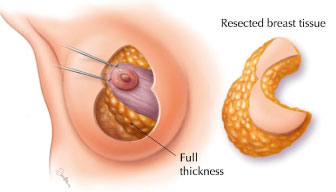Better Breast Reductions With Dr. Christopher Hess
Breast reduction surgery is one of the most common procedures we do in plastic surgery. In fact it has one of the highest patient satisfaction rates of any of our procedures. In one study almost 90% of patients were very satisfied with their surgery and 94% would encourage others to have it. The benefits of reduced neck, shoulder, back pain and under breast rashes as well as the improvement in exercise tolerance, clothing fit and self esteem far exceed any surgical discomfort. But the manner in which this surgery is performed can make a significant difference on the immediate and long-term outcomes.
To dispel the first and most common misunderstanding, the nipple/areola is not removed. Although the incision scars give this impression. The fact is that the nipple areolar complex remains attached to the “pedicle” or the breast tissue remaining after everything else has been removed. The most common method of breast reduction has been the “inferior pedicle” technique. This means that the breast tissue is removed from the lateral, superior and medial aspects of the breast. Or if one thinks about it as a clock, from about 7:00 to 5:00. The remaining pedicle is the tissue between 5:00 and 7:00 up to the center of the clock. This center is where the nipple areolar complex is.
There are a few issues I take with this technique. First, the blood supply is limited so large reductions cannot be done. Second, it removes the breast tissue in the upper part, or superior pole, of the breast which can lead to a flattened area between the collar bone and the nipple. And finally a breast reduction also lifts the breast but this technique tries to push the breast up. Since breast tissue is like gelatin that doesn’t work that well. Don’t get me wrong. Most surgeons use this technique and get good outcomes but I think there is a better technique.
I prefer a “superomedial” pedicle technique. Although this was first introduced in the 1950’s it never caught on for unknown reasons. However, around 10 years ago Dr. Elizabeth Hall-Findlay, of Canada, reintroduced the technique. In this technique the breast tissue that is removed is the breast tissue that bothers women. The tissue is removed from about the 4:00 position, around the bottom of the breast to the 11:00 position.
I think this is a better technique for several reasons. First, as I said the tissue that bothers women with large breasts the most is removed. Second, the pedicle or remaining breast tissue has fantastic blood supply so even the largest reduction is possible. And finally the breast is supported from above like a suspension bridge-which works well for breast tissue.
So if you’re looking for a better breast reduction in the Washington DC area, call my assistant Katie to schedule your consultation.